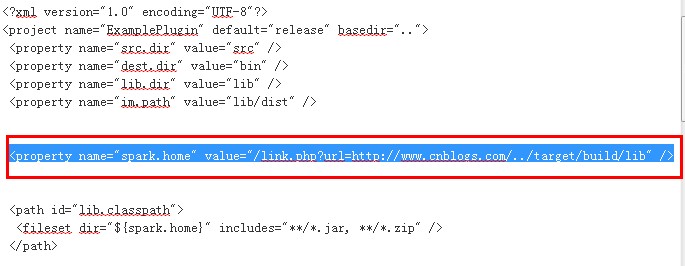Java朝花夕拾の实现Comparable接口
Java.lang.Comparable接口中唯一的方法是compareTo(),在该方法中可以进行简单的相等比较以及执行顺序比较,接口实现框架如下:
[java]
public class ComparableImpl implements Comparable<ComparableImpl> {
@Override
public int compareTo(ComparableImpl o) {
// TODO Auto-generated method stub
return 0;
}
}
public class ComparableImpl implements Comparable<ComparableImpl> {
@Override
public int compareTo(ComparableImpl o) {
// TODO Auto-generated method stub
return 0;
}
}
一个类实现了Comparable接口,则说明它的实例具有内在的排序关系,就可以跟多种泛型算法以及依赖于该接口的集合实现进行协作。依赖于比较关系的类包括有序集合类TreeSet和TreeMap,以及工具类Collections和Arrays。
若一个数组中的元素实现了Comparable接口,则可以直接使用Arrays类的sort方法对这个数组进行排序。Java平台库中的所有值类(value classes)都实现了Comparable接口。
Comparable的规范说明如下:将当前这个对象与指定对象进行顺序比较。当该对象小于、等于或大于指定对象时,分别返回一个负整数、零或者正整数。如果由于指定对象的类型而使得无法进行比较,则抛出ClassCastException异常。www.zzzyk.com
compareTo方法的实现必须满足如下几个限制条件:自反性、对称性、传递性和非空性。
一般来说,comparaTo方法的相等测试应该返回与equals方法相同的结果。如果相同,则由compareTo方法施加的顺序关系被称为“与equals一致”;如果不同,则顺序关系被称为“与equals不一致”。如果一个类的compareTo方法与equals方法的顺序关系不一致,那么它仍然能正常工作,只是,如果一个有序集合包含了该类的实例,则这个集合可能无法遵循某些集合接口的通用约定。因为集合接口的通用约定是按照equals方法定义的,而有序集合使用了由compareTo施加的相等测试。下面是实现了Comparable接口的类,同时,该类还重写了equals和hashCode等方法:
[java]
public abstract class ZLTextPosition implements Comparable<ZLTextPosition> {
public abstract int getParagraphIndex();
public abstract int getElementIndex();
public abstract int getCharIndex();
public boolean samePositionAs(ZLTextPosition position) {
return
getParagraphIndex() == position.getParagraphIndex() &&
getElementIndex() == position.getElementIndex() &&
getCharIndex() == position.getCharIndex();
}
@Override
public int compareTo(ZLTextPosition position) {
final int p0 = getParagraphIndex();
final int p1 = position.getParagraphIndex();
if (p0 != p1) {
return p0 < p1 ? -1 : 1;
}
final int e0 = getElementIndex();
final int e1 = position.getElementIndex();
if (e0 != e1) {
return e0 < e1 ? -1 : 1;
}
final int c0 = getCharIndex();
final int c1 = position.getCharIndex();
if (c0 != c1) {
return c0 < c1 ? -1 : 1;
}
return 0;
}
@Override
public boolean equals(Object obj) {
if (this == obj) {
return true;
}
if (!(obj instanceof ZLTextPosition)) {
return false;
}
final ZLTextPosition position = (ZLTextPosition)obj;
return samePositionAs(position);
}
@Override
public int hashCode() {
return (getParagraphIndex() << 16) + (getElementIndex() << 8) + getCharIndex();
}
@Override
public String toString() {
return getClass().getName() + " " + getParagraphIndex() + " " + getElementIndex() + " " + getCharIndex();
}
}
public abstract class ZLTextPosition implements Comparable<ZLTextPosition> {
public abstract int getParagraphIndex();
public abstract int getElementIndex();
public abstract int getCharIndex();
public boolean samePositionAs(ZLTextPosition position) {
return
getParagraphIndex() == position.getParagraphIndex() &&
getElementIndex() == position.getElementIndex() &&
getCharIndex() == position.getCharIndex();
}
@Override
public int compareTo(ZLTextPosition position) {
final int p0 = getParagraphIndex();
final int p1 = position.getParagraphIndex();
if (p0 != p1) {
return p0 < p1 ? -1 : 1;
}
final int e0 = getElementIndex();
final int e1 = position.getElementIndex();
if (e0 != e1) {
return e0 < e1 ? -1 : 1;
}
final int c0 = getCharIndex();
final int c1 = position.getCharIndex();
if (c0 != c1) {
return c0 < c1 ? -1 : 1;
}
return 0;
}
@Override
public boolean equals(Object obj) {
if (this == obj) {
return true;
}
if (!(obj instanceof ZLTextPosition)) {
return fa
补充:软件开发 , Java ,




